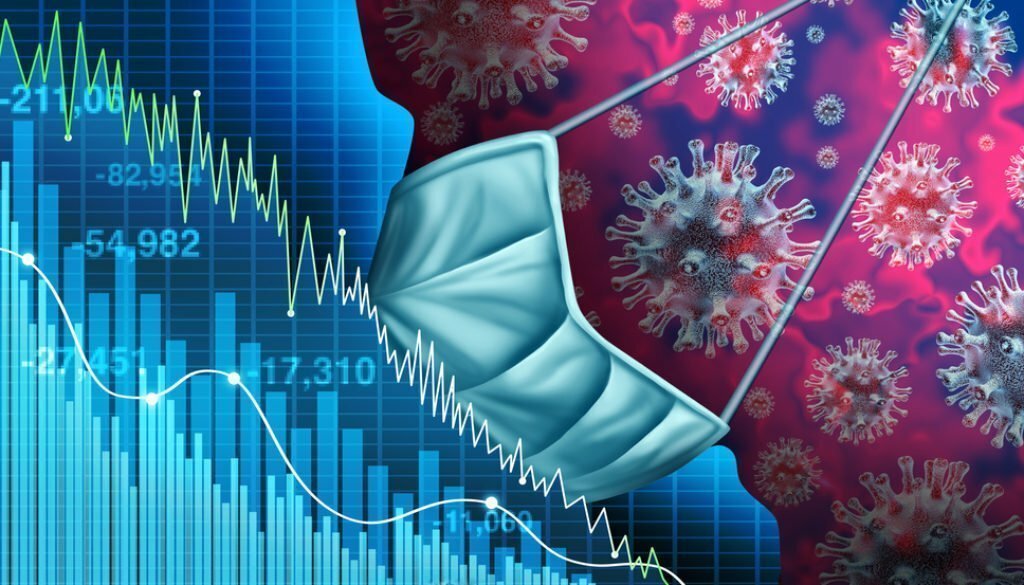Public Health Pandemic Responses Must Include Automatic Economic Protections
Lawrence BrownThe COVID-19 crisis is creating a Faustian decision for the American people—to revive the economy on one hand or the “flatten the curve” and save lives on the other. The choice is being presented as an excruciating tradeoff, and in striking terms as President Donald Trump remarked at a March 24 briefing: “We can’t have the cure [i.e. social distancing and shelter in place measures] be worse than the problem. We have to open our country because that causes problems that, in my opinion, could be far bigger problems.”
Trump’s top economic advisor Larry Kudlow affirmed the president’s argument by stating, “The president is right. The cure can’t be worse than the disease, and we’re going to have to make some difficult trade-offs.” On April 9, Attorney General William Barr remarked that “we need to be very careful that the draconian measures that are being adopted are fully justified.” In each instance, Trump, Kudlow, and Barr are calling into relief the zero-sum notion that what is good for public health is bad for the economy and what is good for the economy is bad for public health.
Public health professionals, however, do not agree with the idea that shelter in place measures are “draconian.” However, it is true that current measures taken to stem the COVID-19 pandemic can result in devastating economic impacts on American workers and businesses. State governors across the nation are ordering businesses to close, instituting stay-at-home orders, and restricting non-essential travel to curb the explosive acceleration of the coronavirus outbreak. Even industries that are allowed to remain open are being hit hard, especially the food service and restaurant industries. Workers are being laid off, furloughed, and terminated in droves, as evidenced by 16 million unemployment claims in a three-week period.
Almost immediately after the growing realization that the pending pandemic was taking root after the first week of March, Congress began to craft legislation to blunt the economic fallout. The lack of sick leave soon became apparent as many workers had no financially viable way to take off from work if they developed symptoms. Congress passed an initial relief package—the Families First Coronavirus Response Act—to help provide relief to families and industries affected by the economy grinding to a halt.
But the scattered nature of the political response to provide relief for American workers, families, small businesses, and large corporations highlights a fragmented emergency response strategy.
Soon thereafter, federal housing and mortgage agencies (i.e. HUD, Fannie Mae, and Freddie Mac) began authorizing mortgage forbearance for homeowners. At the local level, several cities moved to halt evictions and stop shutoffs of water and electricity to blunt the impact of the crisis. As the coronavirus pandemic became increasingly lethal, Congress began a massive $2.2 trillion legislative stimulus package that would authorize a widespread direct cash infusion program to compensate American households for the economic damage caused by the coronavirus epidemic (totaling $300 billion), provide income for newly unemployed workers ($260 billion), and rescue impacted small businesses (totaling $377 billion) and large corporations ($500 billion). On March 27, President Trump signed the CARES Act into law.
This rapid chain of events reveals a widespread recognition that large-scale public health pandemics require a swift and sweeping economic response. But the scattered nature of the political response to provide relief for American workers, families, small businesses, and large corporations highlights a fragmented emergency response strategy. At multiple levels of government, various relief measures are instituted in some places but not others. Some populations are assured of relief measures, but other vulnerable populations—such as people who are undocumented, incarcerated, and experiencing homelessness—are being left out of relief efforts in many communities, or locked out from receiving the aid in the CARES Act.
To avoid a patchwork of response efforts and forestall discussions of difficult zero-sum tradeoffs, America’s public health pandemic responses should be made much more uniform. Certain measures or protections must be enshrined into local, state, and national public health emergency pandemic declarations. Whenever people are directed to stay at home and shelter in place, public health pandemic responses should automatically include eviction/foreclosure moratoriums, utility shutoff moratoriums, organized food and medicine distribution, child care support for essential workers, universal paid sick leave, and universal basic income that provides rapid and equitable financial relief, particularly for people who lose their jobs.
Public health pandemic responses should also include automatic provisions to protect people who are undocumented, incarcerated, and experiencing homelessness. This means halting all ICE raids and deportation efforts for so that people who are undocumented can feel confident in seeking care when needed. With the need for physical distancing, the populations for homeless shelters, jails, and prisons should be reduced. In addition, people who are formerly incarcerated or experiencing homelessness should be provided with safe and secure housing and deep income supports to meet their basic needs as they shelter in place.
To ensure that the response efforts will not fall prey to Faustian bargaining between the economy and public health, Americans must agree that public health pandemic responses will automatically trigger these broad protections.
To ensure that the response efforts will not fall prey to Faustian bargaining between the economy and public health, Americans must agree that public health pandemic responses will automatically trigger these broad protections. Not only are such protections the humane and moral thing to do, the pandemic responses and protections I mentioned above help enable everyone’s cooperation with public health efforts, particularly the most vulnerable people, workers, and small businesses in our society. Large corporations should also be given certain automatic economic protections as well. These automatic economic protections would help them to suspend operations more rapidly and send workers home more swiftly, since they would know they would be made whole after the pandemic subsides.
There are undoubtedly tradeoffs when it comes to stringent measures to curb the spread of COVID-19. But there would be no discussion of trading America’s economic vitality at the cost of saving and protecting American lives if public health pandemic measures automatically included broad economic protections and swift direct aid. Americans should know in advance that they will be protected in the time of pandemics and made whole during the time of recovery. This will help ensure speedy cooperation, and in doing so, accelerate the time when the country can be “reopened.” American capitalism is too baked into the social construct to be ignored in the design of public health strategies. Public health pandemic responses must be designed to help protect America from itself and incentivize saving American lives first.





All comments will be reviewed and posted if substantive and of general interest to IAPHS readers.